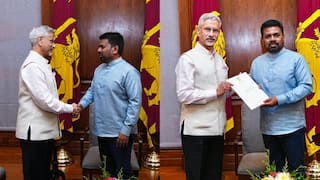NVS-01: ISRO To Launch India's First Second-Gen NavIC Satellite Next Week. All You Need To Know
The NVS-01 satellite is India's first second-generation satellite that will be a part of the Navigation with Indian Constellation (NavIC) services.

GSLV-F12/NVS-01: The Indian Space Research Organisation (ISRO) is set to launch the NVS-01 satellite next week. The NVS-01 satellite is India's first second-generation satellite that will be a part of the Navigation with Indian Constellation (NavIC) services.
ISRO's Geosynchronous Satellite Launch Vehicle (GSLV) will launch the NVS-01 navigation satellite at 10:42 am IST on May 29, from the second launch pad at Satish Dhawan Space Centre, Sriharikota. The NVS-01 satellite weighs about 2,232 kilograms. It will be launched into a Geosynchronous Transfer Orbit. After launch, the satellite will perform orbit-raising manoeuvres to reach its intended orbit.
NVS satellites will have enhanced NavIC features, and incorporate L1 band signals, ISRO says on its website.
NVS-01 will also be equipped with an indigenous atomic clock.
In October 2022, ISRO announced its plans to expand the NavIC system in order to increase its use in the civilian sector and by ships and aircraft travelling at large distances from India's borders.
More about NaVIC, and what it offers
NaVIC, earlier known as the Indian Regional Navigation Satellite System (IRNSS), is designed with a constellation of seven satellites, three of which are placed in geostationary orbit, and four are placed in an inclined geosynchronous orbit. The system also includes a network of ground stations operating 24x7.
NaVIC offers Standard Positioning Service (SPS), a real-time positioning and timing service, to civilian users, and ‘Restricted Service’ (encrypted services) for authorised users, including the military. The coverage area of NaVIC includes India and a region up to 1,500 kilometres beyond the country’s boundary.
Since several satellites belonging to the NaVIC constellation have outlived their lives, ISRO plans to replace at least five of them with the improved L-band. This would enable the satellites to offer better global positioning service (GPS) to the public.
"We have five more satellites in production, they have to be launched periodically to replace the defunct satellites. The new satellites will have L-1, L-5 and S Band," S Somanath, Chairman of ISRO, was quoted as saying on the sidelines of an event in a PTI report last year.
On the sidelines of the India Space Congress 2022 organised by the SatCom Industry Association (SIA-India), Somanath said the NaVIC system was not in a "full-fledged operational regime" as some of its seven satellites have stopped working.
He also said that ISRO has approached the government for permission to launch an additional 12 satellites to Medium Earth Orbit (MEO) to expand the reach of NaVIC.
The ISRO Chief added that a regional to ‘global’ changeover will be very fast if one has a GEO-MEO constellation.
The current constellation of satellites which are a part of NaVIC operate in the L-5 band and S band, which are used for the transportation and aviation sectors.
Somanath said that the new satellites need to be equipped with the L-1 band, which is a typical GPS band for public use, and which is not currently there in NaVIC. He explained that this is the reason why NaVIC has not penetrated into the civilian sector easily.
He further said that the new satellites being built for NaVIC will have better features for the safe transmission of signals for different purposes, particularly for the strategic sector.






































